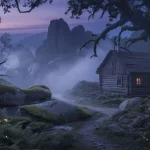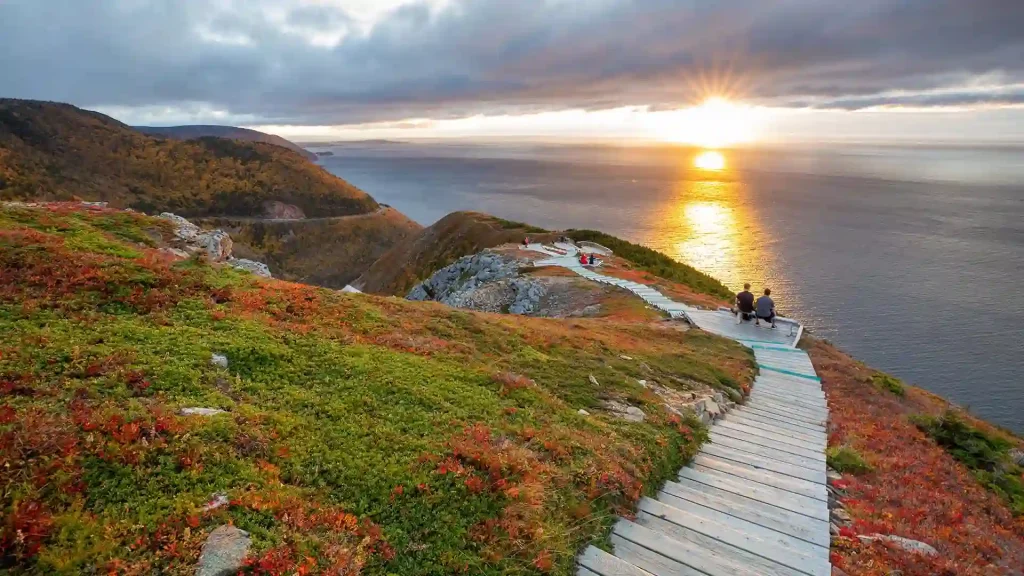10 Best Ghost Towns in Texas to Visit in 2025
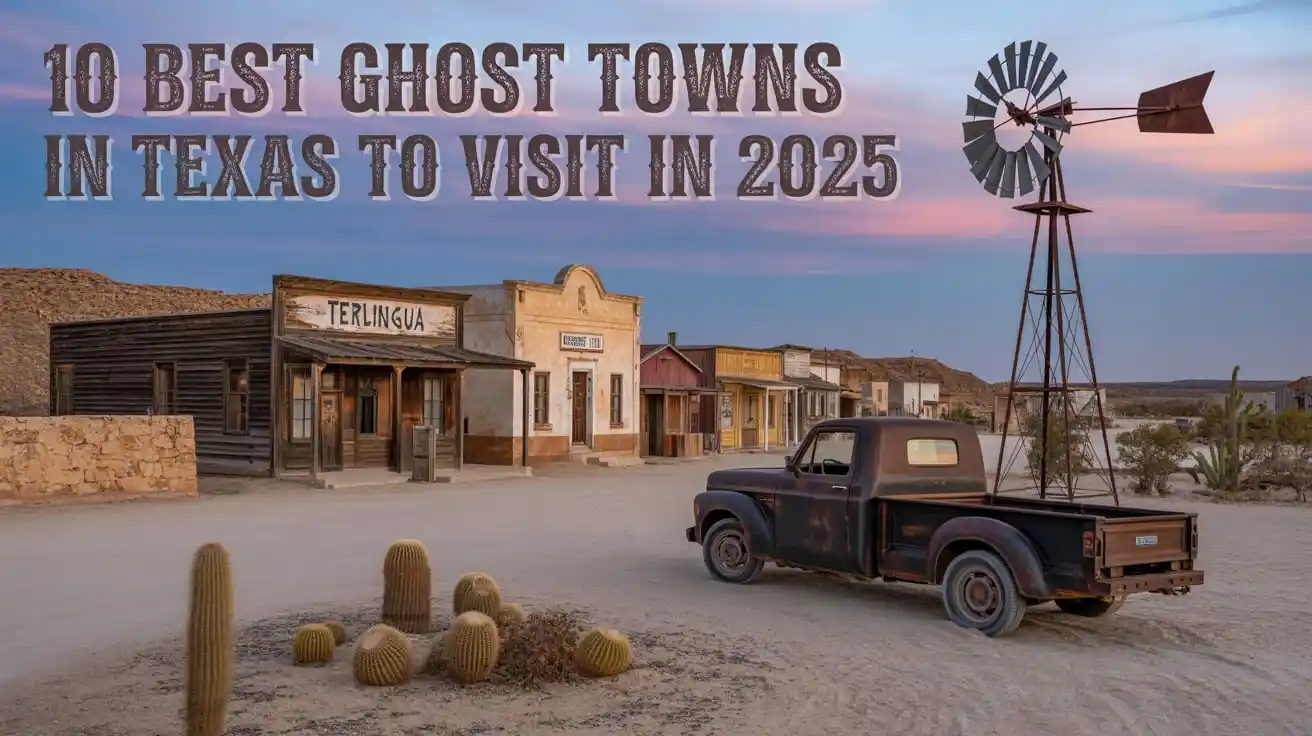
Hidden across the Lone Star State are eerie, abandoned towns where history clings to rusted signs and broken windows whisper stories of lives once lived.
Picture sun-bleached saloons, overgrown cemeteries, and cracked sidewalks that haven’t felt a steady footstep in decades. Whether you’re chasing legends of the Old West or just want to wander somewhere completely different, Texas has ghost towns that’ll haunt you—in the best possible way.
This guide dives into the list of 10 of the best ghost towns in Texas to visit, carefully selected for their history, atmosphere, and accessibility.
Some are half-living towns with quirky art scenes, others are silent ruins in the desert where only the wind keeps you company.
We’ll cover what you’ll actually need to know to make the most of your spooky day trip: where they are, when to go, what to expect, and the strange stories behind each forgotten place.
🗺️ What Makes a Great Ghost Town Worth Visiting?
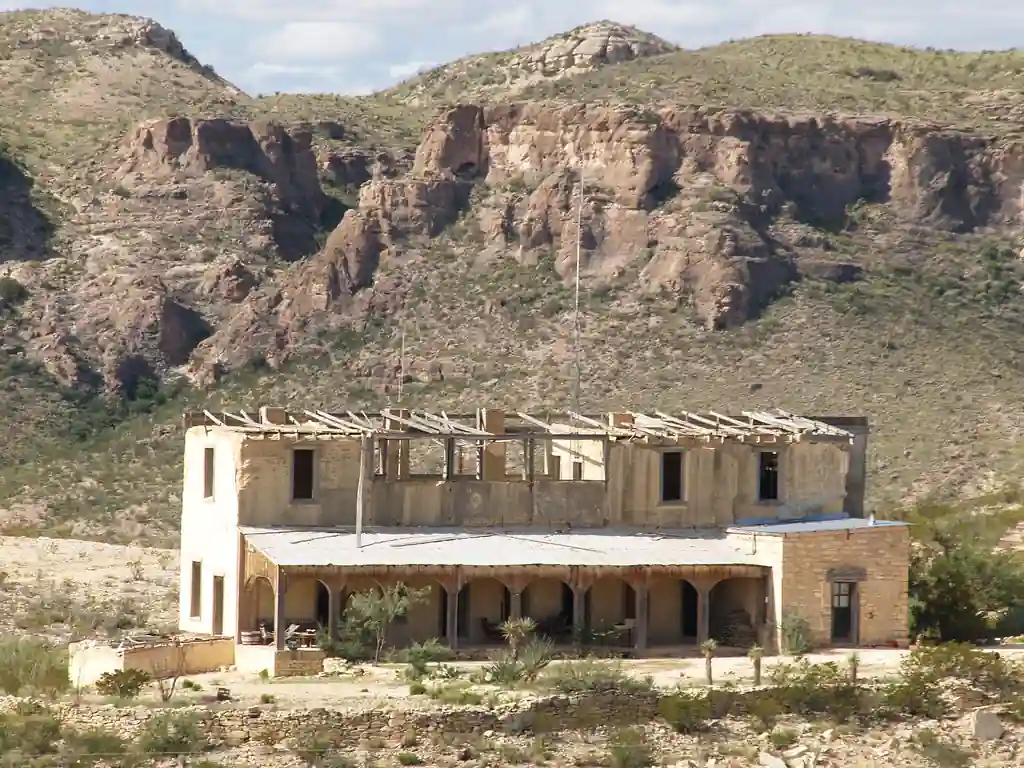
Before you hit the road, it’s worth knowing what separates a truly captivating ghost town from just a few empty buildings. Not every abandoned site tells a story worth hearing—but the ones on this list absolutely do.
Historic Significance
The best ghost towns in Texas aren’t just empty—they’re echo chambers of real history. You’ll find:
- Boomtowns born from oil strikes, mining rushes, or the arrival of railroads.
- Sites impacted by natural disasters like hurricanes or droughts that changed the course of entire communities.
- Places with ties to quicksilver production, World War I, or even early Mexican trading outposts.
- Buildings still standing—like courthouses, churches, and jails—that give you a real sense of what life once looked like.
Many towns like Terlingua or Helena still hold relics that link directly to significant events in Texas and American history.
Accessibility and Atmosphere
Let’s be honest: some ghost towns are only reachable with a 4WD and a strong sense of adventure. Others sit just a few minutes off well-maintained highways.
In this list, we’ve noted the ease of access for each location—because not everyone wants to navigate dry creek beds and loose gravel roads.
That said, the atmosphere matters too. What makes these ghost towns unforgettable are:
- Scenic ruins with saloons, schoolhouses, or even abandoned motels
- Old cemeteries and churches quietly eroding under the Texas sun
- Dusty main streets with nothing but the sound of your own footsteps
- The occasional gift shop or art gallery that adds a quirky, living twist to the dead past
Some towns even come alive for a day or two each year—thanks to local festivals or events like the Terlingua chili cook-off.
Pro Tip: Grab a Texas ghost towns map or download an offline version before your trip. Many areas have zero cell coverage, especially out west.
Next up: Let’s dive into the top ghost towns you should actually visit—starting with the most iconic of them all.
🏚️ 10 Best Ghost Towns in Texas to Visit
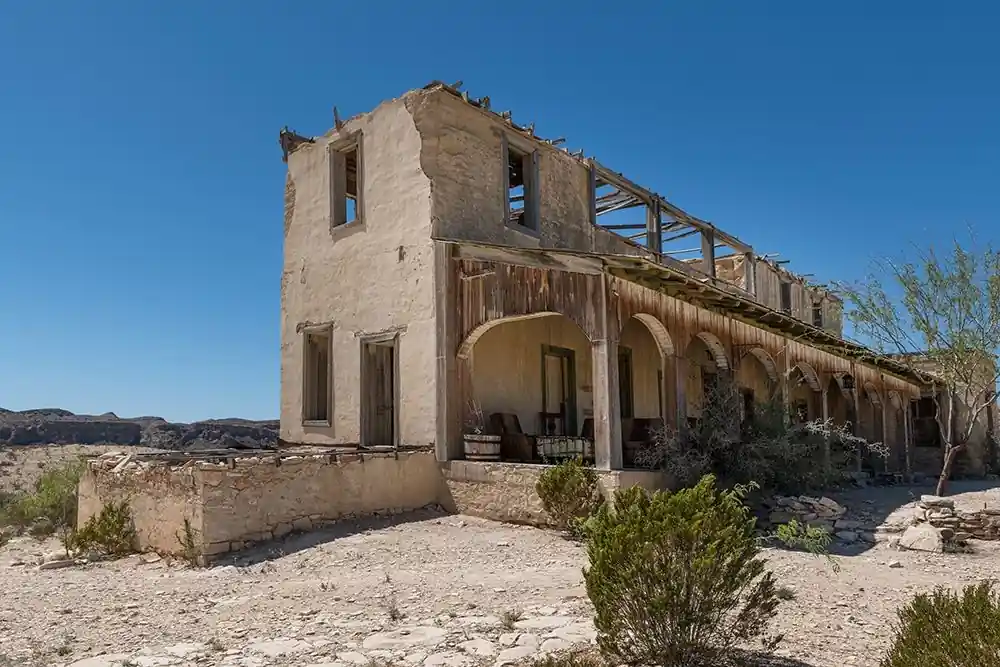
1. Terlingua – The Most Famous Texas Ghost Town
If there’s one ghost town that captures the spirit of Texas like no other, it’s Terlingua ghost town. Tucked between the Chisos Mountains and the Chihuahua Desert, just outside Big Bend National Park, Terlingua was once a thriving quicksilver mining hub.
Today, it’s a strange and wonderful blend of abandoned buildings, off-grid artists, and curious travelers.
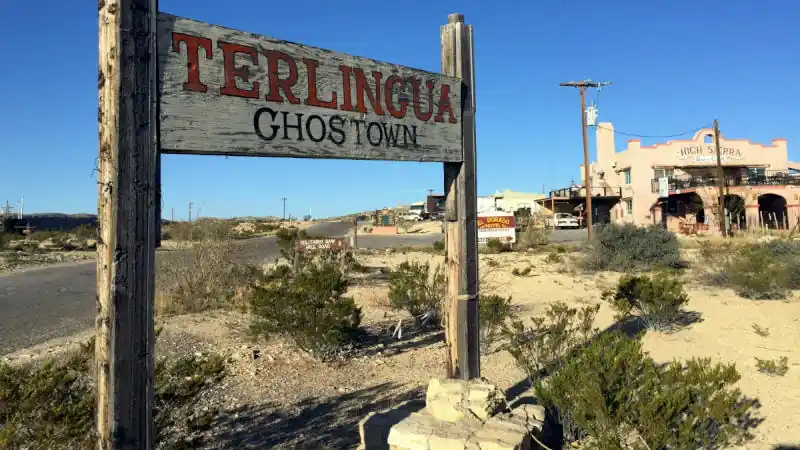
The heart of Terlingua is its historic cemetery, where weathered wooden crosses lean under the desert sun. Nearby, the ruins of the Chisos Mining Company still stand—an eerie reminder of early 1900s industry. But don’t let the ghostly vibe fool you. Terlingua isn’t totally dead.
- Grab a cold drink and live music at the Starlight Theatre, a former movie house turned bar and restaurant.
- Stop by the Earth and Fire Gallery for local desert art and quirky souvenirs.
- Visit in early November for Tolbert’s International Chili Cook-Off, when the town comes alive with campers, chili fans, and storytelling around campfires.
Getting There:
Terlingua is about 7.5 hours from San Antonio by car. If you’re flying, Midland International Airport is the nearest major hub (3.5 hours away by road). Make sure your tank is full—services are sparse once you’re in West Texas.
Best Time to Visit:
Late fall to early spring (October to March) is ideal. Summer temperatures often top 100°F, and the area gets extremely dry. Spring bloom adds rare pops of color to the desert backdrop.
Insider Insight: Terlingua and nearby Study Butte are some of the last places to grab snacks or fuel before entering Big Bend National Park. Lodging options are limited—book in advance, especially during festival season.
Explore more on 12 Must-Visit Regions in Texas for Every Type of Traveler
2. Indianola – The Lost Port City
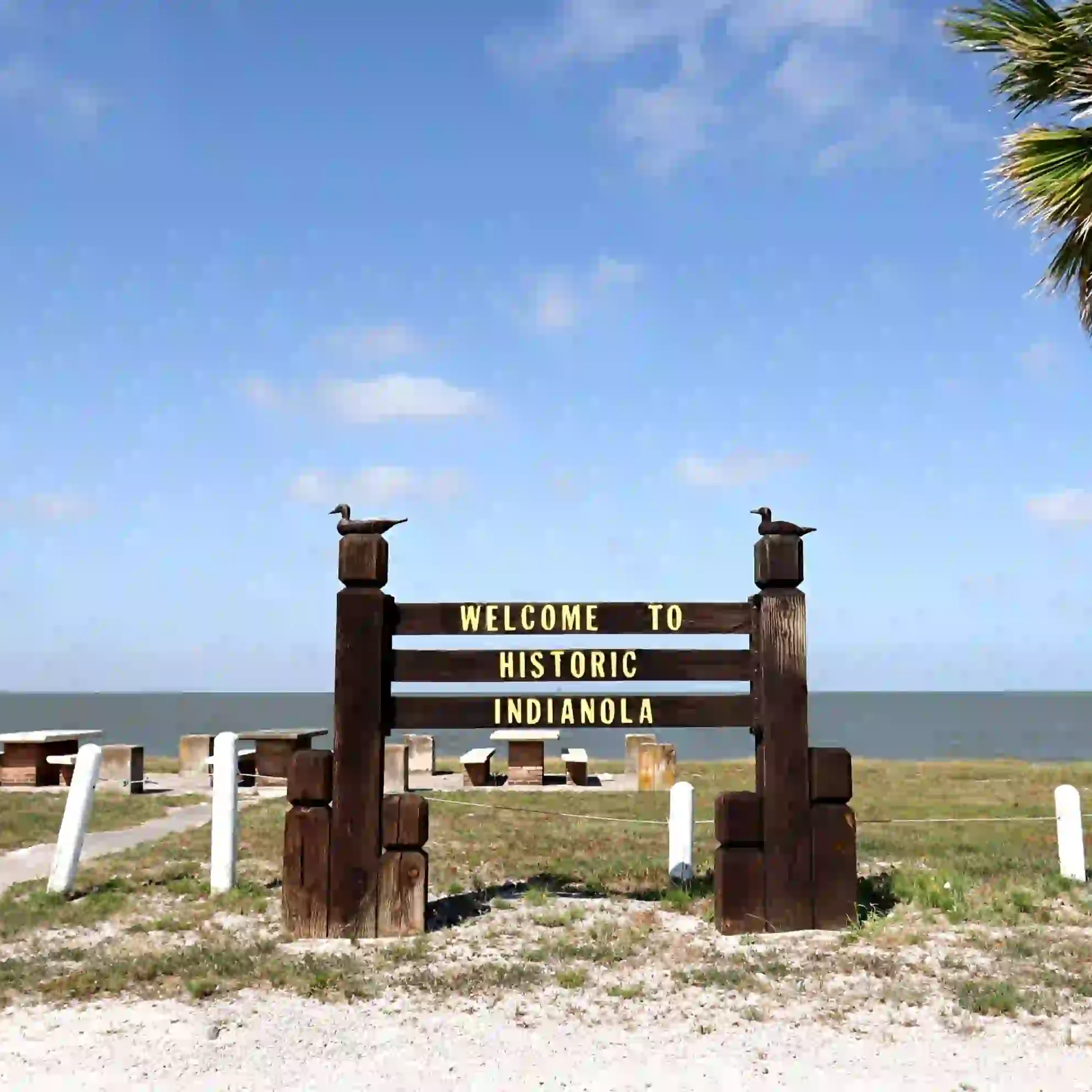
Once poised to become Texas’ biggest port, Indianola was tragically erased not by time, but by nature. Sitting quietly along the Matagorda Bay, this once-thriving port town was battered by two devastating hurricanes in 1875 and 1886, wiping out most of its infrastructure and ending its ambitions as a major trade hub.
What remains is ghostly in a completely different way. Indianola isn’t buried under sand or swallowed by the desert—it’s wide open and windswept, with foundation ruins, gravestones, and historic markers scattered along the coast.
- Visit the Indianola Cemetery, where marble headstones from the 1800s still stand.
- Walk the shoreline to find remnants of buildings slowly being reclaimed by nature.
- History buffs should read up on Sam Houston’s connection to Indianola—it was a key entry point for early settlers and military supplies.
Getting There:
Indianola is located in Calhoun County, about 2 hours and 45 minutes from San Antonio and 2 hours from Houston. It’s an easy day trip for coastal explorers or history lovers.
Best Time to Visit:
Late winter through spring (February to April) offers mild weather and fewer coastal storms. Summer brings heat and humidity, and hurricane season (June to November) can impact travel plans.
Pro Tip: Indianola pairs well with nearby ghost sites like Old Town Texana or even Port Lavaca for a day of abandoned coastal history.
3. Lobo – A Deserted West Texas Outpost
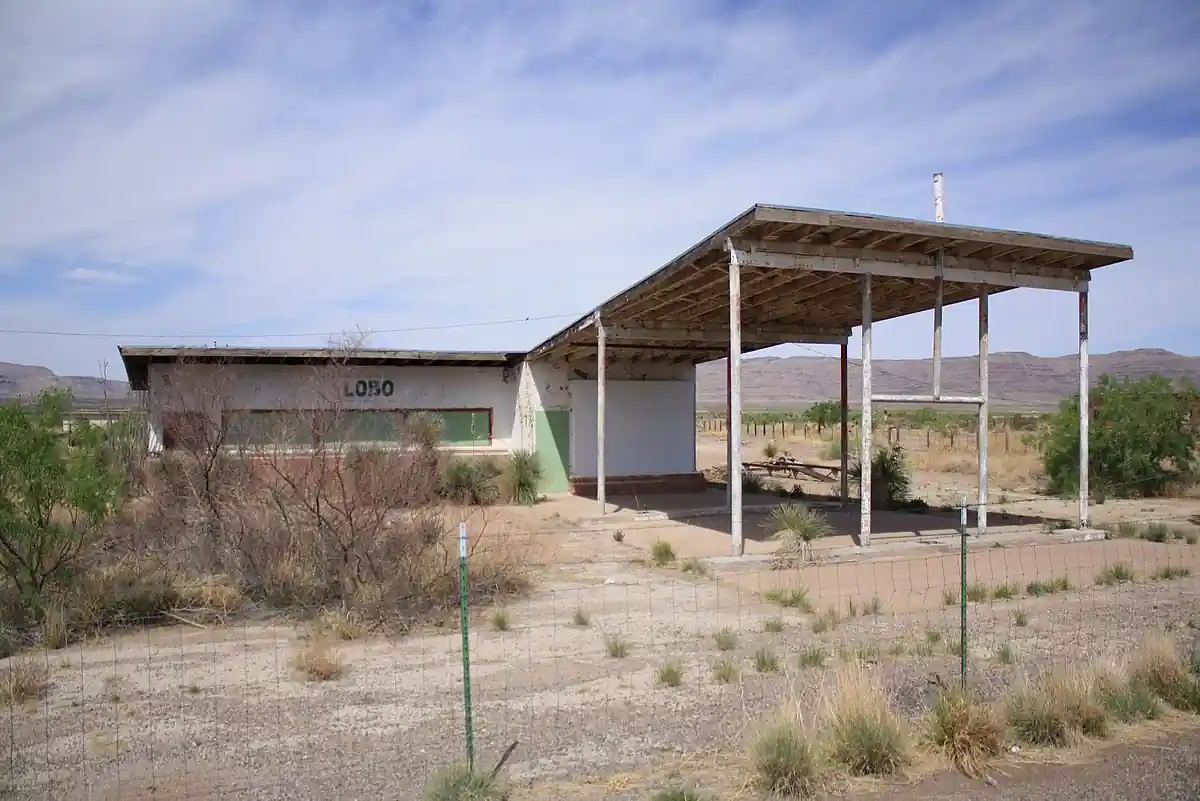
If you’re chasing solitude, surreal landscapes, and the true essence of abandonment, Lobo should be on your radar. Nestled off U.S. Route 90 between Van Horn and Marfa, this forgotten West Texas ghost town once had a post office, gas station, grocery store, and motel. Now? It’s a skeletal shell of what it once was—no residents, no stores, just open space and crumbling dreams.
Despite its silence, Lobo isn’t completely forgotten. A group of artists purchased it in the early 2000s and occasionally host experimental events and art installations on site—making it a sort of outdoor museum meets vanishing Texas relic.
- You’ll find abandoned buildings like a gutted motel and derelict service station perfect for photographers.
- There are no formal facilities, signage, or marked parking—so plan ahead and come self-sufficient.
- Don’t expect cell service, paved paths, or shade. This is Chihuahua Desert country, raw and remote.
Getting There:
Lobo is roughly 3.5 hours southeast of El Paso, or about 2 hours from Marfa. The town sits just south of Interstate 10, so it’s technically accessible—but there’s no gas or lodging within 30 miles. Come with a full tank and good tires.
Best Time to Visit:
Visit between October and March, when daytime temperatures hover between 55°F and 75°F. Summers are brutal here, regularly topping 105°F, and the dry heat can quickly drain your energy.
Insider Insight: Want the full eerie experience? Arrive around sunset. The orange glow over abandoned ghost towns in Texas like Lobo adds an eerie, cinematic touch—like stepping into an old movie set.
4. Glenrio – A Ghost Town on Route 66
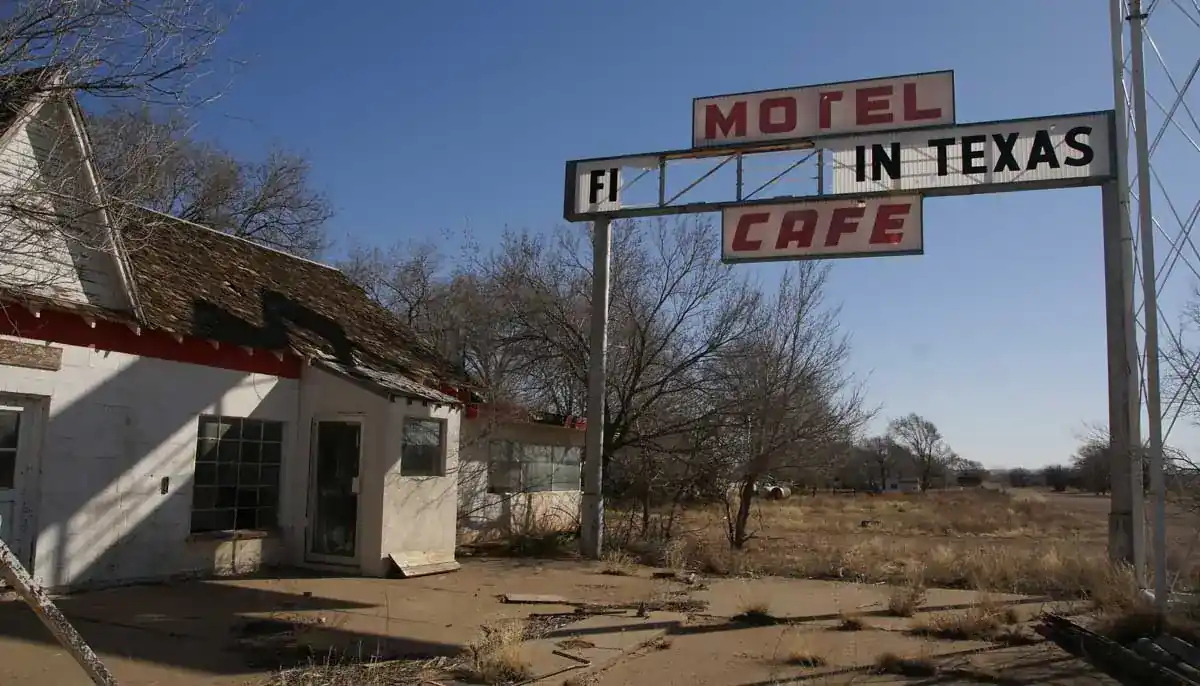
Straddling the Texas–New Mexico border, Glenrio is one of the best-preserved ghost towns along the historic Route 66 corridor. Once a lively stop for travelers making the westward journey, Glenrio began its slow fade after the opening of Interstate 40, which rerouted traffic and business away from the old highway.
Today, you can walk right through the remnants of abandoned diners, gas stations, and motels that haven’t served a customer in decades. The town has been used in several films and documentaries about the vanishing American road trip era, and some parts are designated on the National Register of Historic Places.
- Check out the Glenrio Welcome Center (on the New Mexico side) before diving into the Texas ghost town ruins.
- Look for the 1950s-style gas station and old café with original signage still intact—it’s a real-life time capsule.
- There are no residents today, though one or two extant buildings still stand in decent shape.
Getting There:
Glenrio is located just off I-40, about 1.5 hours west of Amarillo. It’s easy to reach, but still feels incredibly isolated—especially if you’re driving the old Route 66 alignment instead of the freeway.
Best Time to Visit:
Spring and fall are ideal, particularly April to May and September to early November. Summers can be hot and dusty, and winter occasionally brings icy winds to the Texas Panhandle.
Pro Tip: Pair your visit with a stop at the Route 66 Museum in Shamrock, or continue west to see abandoned mines and sites no longer in existence along the original highway.
5. Toyah – A Slowly Crumbling Rail Town
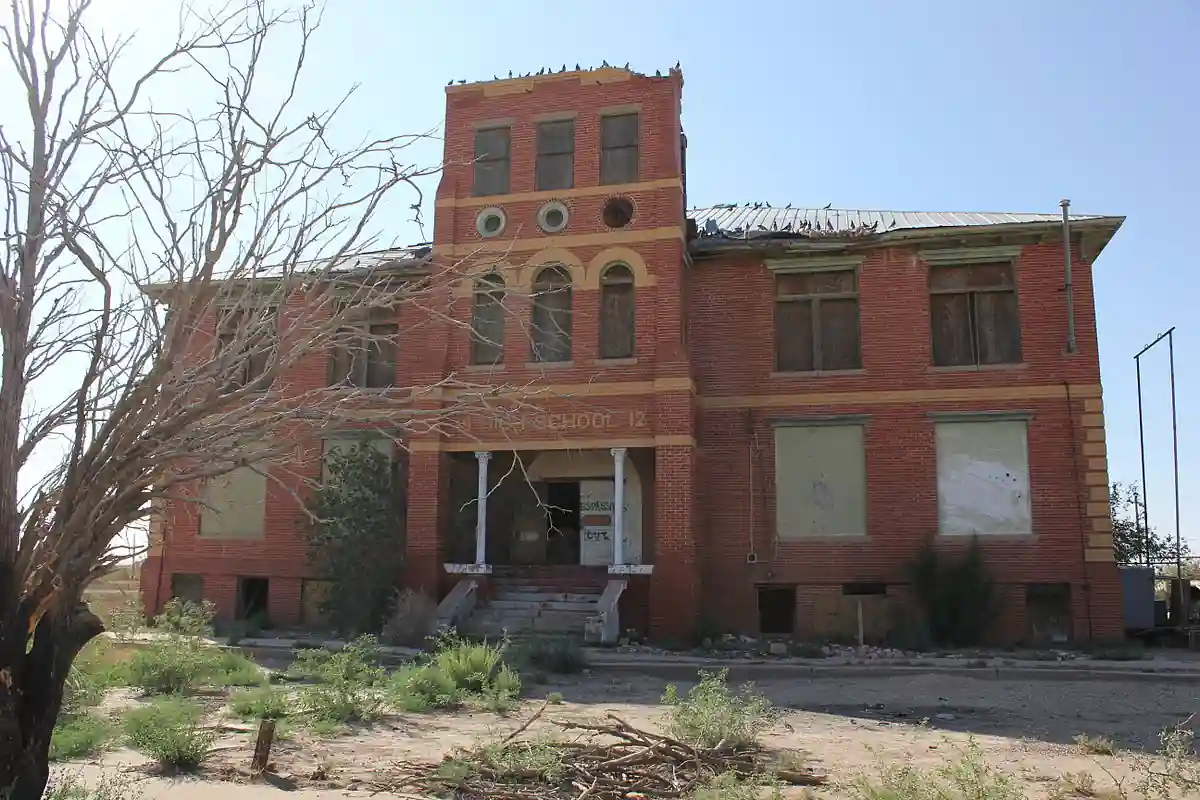
Just west of Pecos along Interstate 20, you’ll find Toyah, a hauntingly quiet place that feels more like a memory than a town.
Once a modest railroad stop and ranching hub, Toyah began fading in the mid-20th century as train traffic dwindled and younger generations moved on. Today, it stands as one of the most evocative abandoned towns in Texas.
What’s left of Toyah is striking:
- Collapsed houses, boarded-up school buildings, and an abandoned jail with rusted bars and graffiti from past wanderers.
- The rail tracks still run near the town, occasionally echoing with the rumble of freight trains—an eerie contrast to the stillness around you.
- Despite the desolation, a handful of residents remain, giving the area an odd blend of the living and the lost.
Getting There:
Toyah is about 1 hour west of Odessa, just off I-20. It’s easy to reach with any vehicle, and there’s limited gas and food in nearby Pecos.
Best Time to Visit:
Go between October and April to avoid the punishing West Texas summer heat. Cloudy days give the ruins an especially cinematic vibe—perfect for photographers chasing the vanishing Texas aesthetic.
Insider Insight: Some buildings, like the schoolhouse and jail, are structurally unstable. Look, don’t touch—and always stay on public land or roads unless given permission. Toyah is one of those rare towns where the Old West still seems to echo.
6. Barstow – A Forgotten Water Boom Town

Not far from Toyah lies Barstow, another historic community that once brimmed with optimism. In the 1890s, Barstow thrived thanks to early irrigation projects drawing from the Pecos River. The desert turned green, the crops grew fast… until the water dried up, and the dreams did too.
By the 1930s, Barstow was well on its way to ghost town status. What remains today are:
- The ruins of a stone courthouse, now partially collapsed but still standing as a solemn landmark.
- Old church structures, dry canals, and broken sidewalks that speak to what once was.
- A feeling of suspended history, with a few homes still inhabited around the outskirts.
Getting There:
Barstow is just 10 miles west of Pecos on U.S. Route 80. It’s easily accessible and makes a great double stop with Toyah if you’re exploring West Texas ghost towns in a single afternoon.
Best Time to Visit:
Visit in early spring (March–April) or late fall (October–November) for the most comfortable weather. Like most towns in this region, summer temperatures are extreme, and shade is minimal.
Pro Tip: While you’re in the area, consider detouring to Balmorhea State Park (about 45 minutes away) for a swim in the spring-fed pool—especially if your ghost town hunt leaves you dusty and sunbaked.
7. Clairemont – The Almost Capitol
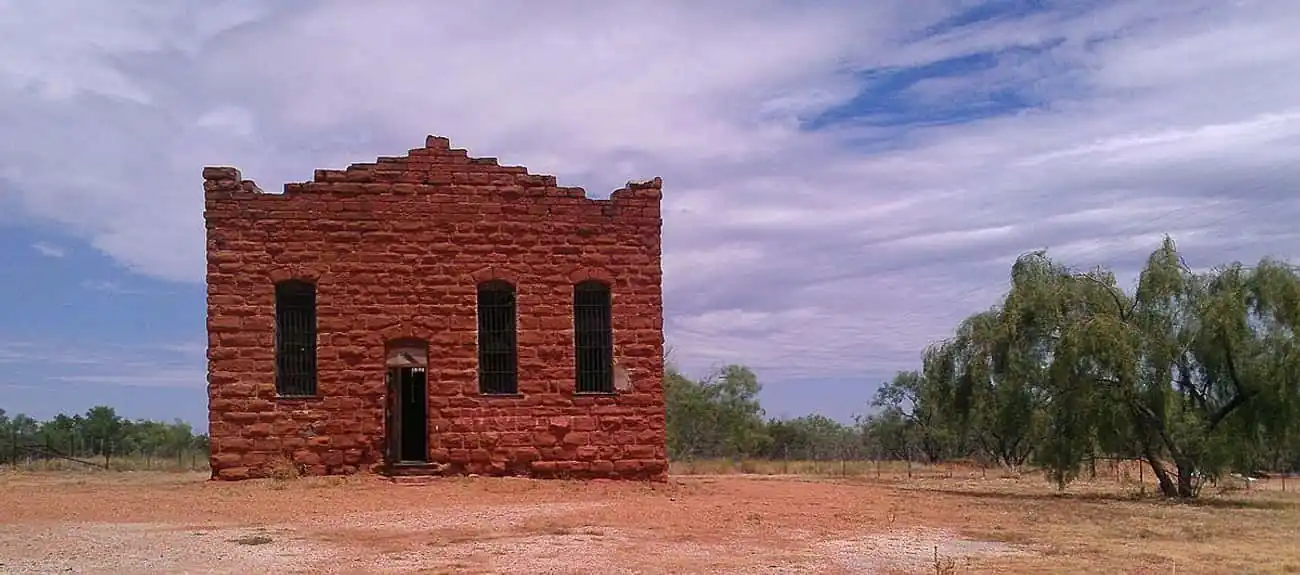
Perched on the High Plains of West Texas, Clairemont is one of those towns that makes you wonder, “What if?” At one point, this now-abandoned site was being considered as the capital of Texas—a bold ambition for what’s now a collection of skeletal structures and dusty roads.
Founded in the 1890s, Clairemont briefly flourished as the county seat of Kent County, with a grand courthouse, jail, and ranching hub. But the dreams didn’t last long. After the county seat moved to Jayton, the town slipped into obscurity.
What remains today is surprisingly photogenic:
- The ruins of the courthouse and jail, still standing despite decades of weather and neglect.
- Wide open skies and scenic views of the Texas plains, especially striking at sunrise or sunset.
- A quiet, peaceful mood that’s ideal for travelers seeking something off-grid and soulfully still.
Getting There:
Clairemont sits between Post and Jayton, about 1.5 hours east of Lubbock. You’ll find it off U.S. Highway 380, and while the roads are paved, cell service can be spotty. No fuel, food, or facilities are nearby—come prepared.
Best Time to Visit:
Fall is ideal—particularly October to early November—when the air is cooler and sunsets stretch dramatically across the Central Texas horizon.
Insider Insight: Clairemont is a good stop for anyone interested in Old West history or the Chisholm Trail era. It’s also far less crowded than more famous ghost towns, offering solitude and room for reflection.
8. Bluffton (Old Bluffton) – The Town Beneath the Lake
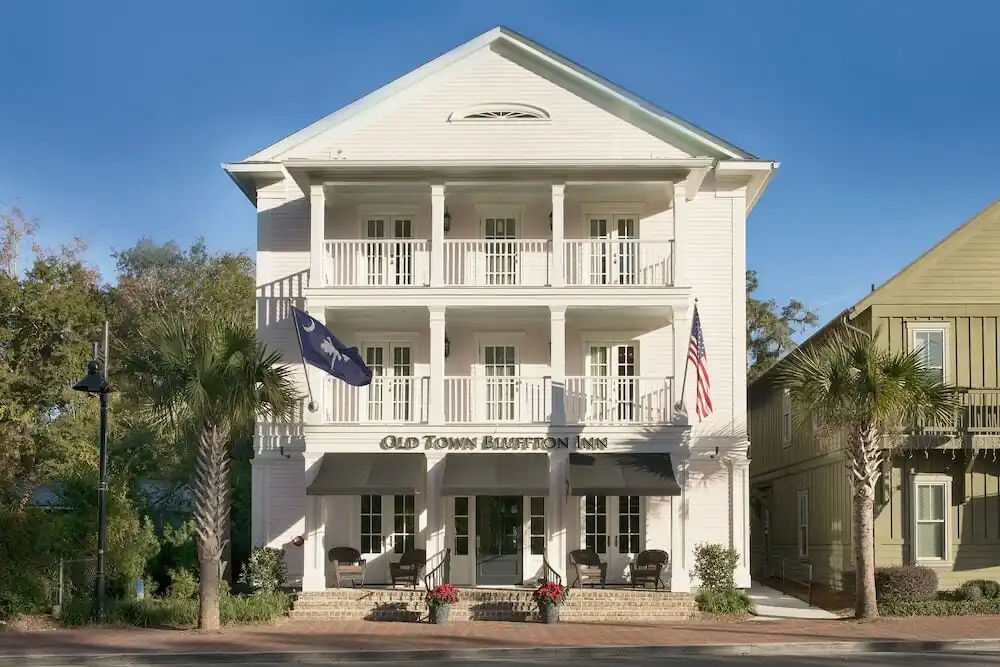
Some ghost towns slowly crumble. Others get submerged under a lake. That’s the strange and haunting story of Old Bluffton, a Central Texas town that was relocated in the 1930s to make way for Lake Buchanan, one of the region’s largest reservoirs.
When water levels drop significantly—usually during extended droughts—the foundations of the original town re-emerge. It’s one of the few Texas ghost towns near me (if you’re in Austin or San Antonio) that literally disappears and reappears with the seasons.
If you’re lucky enough to catch it when visible, you’ll see:
- Eerie stone foundations, old bridge footings, and church outlines.
- Debris from the 1930s-era relocation, including metal remnants and bits of building materials.
- The surreal sight of nature reclaiming a site no longer in existence, now overgrown and half-drowned.
Getting There:
Bluffton (the modern one) is in Llano County, about 90 minutes northwest of Austin. To reach Old Bluffton, you’ll need to head toward the eastern shore of Lake Buchanan and monitor water level reports from the Lower Colorado River Authority. Bring a 4WD if you plan to explore off-road near the shoreline.
Best Time to Visit:
Late summer through fall (August to November) tends to be driest. If there’s been a drought, check local forums or park ranger stations for visibility updates.
Pro Tip: Pair your visit with a swim or picnic at Lake Buchanan or nearby Inks Lake State Park. Just remember—Old Bluffton isn’t always accessible, so have a backup ghost town on your list.
Explore more on 12 Most Beautiful Places in Texas to Take Pictures
9. Sherwood – A Forgotten County Seat with Western Charm
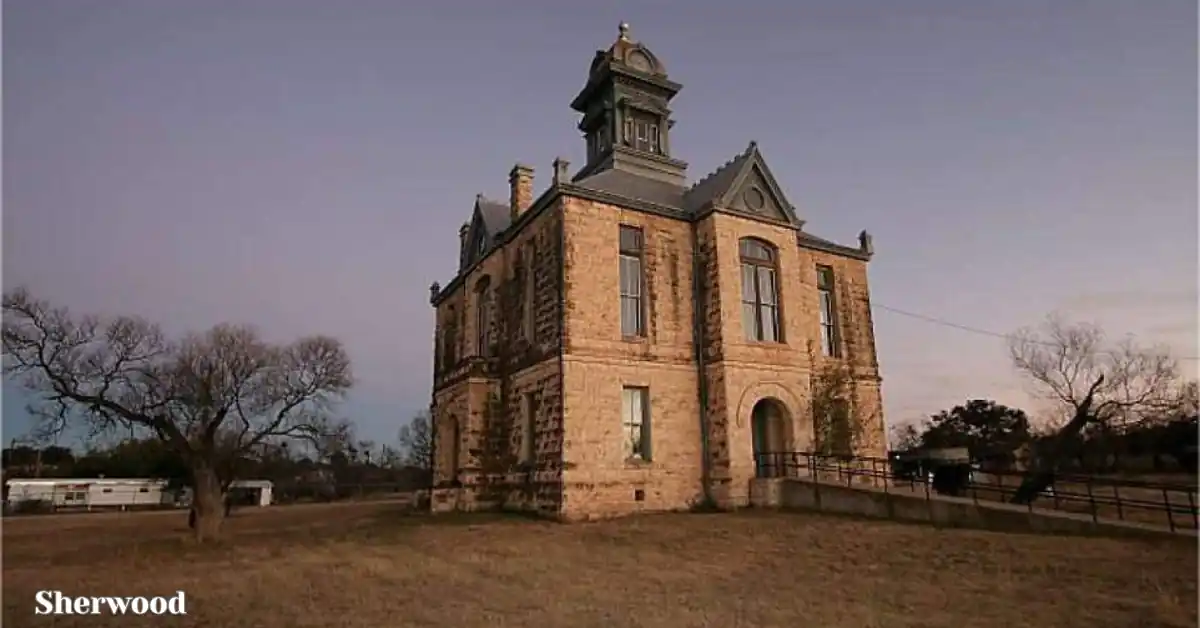
If you’re exploring West Texas and want a quieter, lesser-known ghost town with charm and preservation, Sherwood is well worth a detour. Once the county seat of Irion County, Sherwood faded into the background after the title was moved to nearby Mertzon. But unlike many abandoned towns in Texas, Sherwood still retains an air of dignity.
- The old courthouse, built in 1901 from native stone, is still standing—and beautifully restored.
- The adjacent post office building, now defunct, makes a great photo stop.
- Wide dirt roads and open fields create a serene setting for slow exploration.
This is a historic community where time simply paused rather than collapsed. It’s ideal for travelers who prefer a gentle step into the past rather than full-on decay.
Getting There:
Sherwood is located about 30 miles southwest of San Angelo, just off Texas State Highway 163. It’s easy to reach with any vehicle, and nearby Lake Amistad or San Angelo State Park can add to your day trip.
Best Time to Visit:
Spring and fall (especially April–May and October) offer mild weather and blooming wildflowers. The roads are good year-round, but avoid peak summer when temperatures soar.
Insider Insight: Unlike more desolate ghost towns, Sherwood feels peaceful, not eerie. It’s one of the rare ghost towns where buildings or houses have been maintained without losing their old Texas soul.
10. Helena – The ‘Toughest Town on Earth’
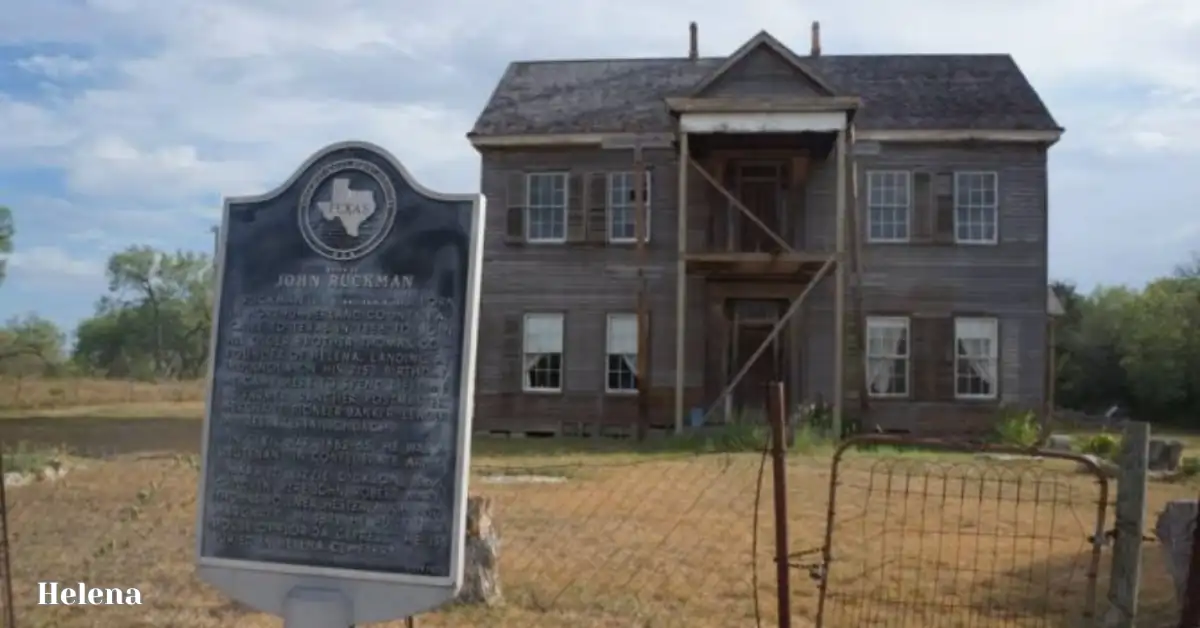
They didn’t call Helena the “Toughest Town on Earth” for nothing. Once a lawless crossroads on the wagon trail between San Antonio and Goliad, Helena was notorious in the late 1800s for frontier justice, wild shootouts, and a brutal punishment method known as the “Helena Duel.”
This abandoned town in Texas may be quiet now, but its past is loud with grit.
- The restored jail, dating back to the 1870s, is now a small museum featuring exhibits on Texas Rangers, local crime, and Wild West justice.
- You’ll also find the Helena Courthouse ruins and several period homes, some relocated to preserve the area’s history.
- The Kenedy Ranch Museum of South Texas, located nearby, offers deeper insight into ranching life and Helena’s once pivotal role in regional trade.
Getting There:
Helena sits along State Highway 80, between Karnes City and Goliad, about 1.5 hours southeast of San Antonio. It’s a great addition to a Texas Hill Country road trip focused on history and heritage.
Best Time to Visit:
Fall and winter (October through February) offer the most comfortable weather. In summer, expect heavy heat and potential crowds on weekends.
Pro Tip: Fans of the supernatural might enjoy knowing that Helena is also featured in some Texas ghost towns near me–style paranormal guides. While there’s no confirmed haunting, the old jail has enough shadows to spark your imagination.
🛣️ Planning Your Texas Ghost Town Road Trip
Whether you’re in it for the history, the photography, or the thrill of forgotten places, visiting multiple Texas ghost towns in one trip makes for an unforgettable adventure.
But to make it work, you’ll need smart routing, prep work, and respect for both the living and the long-gone.
🗺️ Map & Route Suggestions
Texas is huge, so trying to see all ten ghost towns in one trip would be exhausting. Instead, divide your journey into regional clusters based on proximity, road access, and terrain.
West Texas Route
For wild desert ruins, remote locations, and cinematic landscapes:
- Start in El Paso
- Drive east to Lobo, Barstow, Toyah, and Clairemont
- Loop down toward Terlingua, then detour into Big Bend National Park
- Optional: Add stops at Study Butte, Mule Ears Peaks, and Santa Elena Canyon for jaw-dropping desert scenery
Bonus Stop: Don’t miss the Chisos Mission remains inside Big Bend—another haunting entry in the list of sites no longer in existence.
Central & South Texas Loop
A great weekend route for San Antonio or Austin-based travelers:
- Start in San Antonio
- Drive southeast to Helena, then swing northeast toward Sherwood
- If lake levels are low, detour north to Old Bluffton and Lake Buchanan
- Round out your trip with a stop at Enchanted Springs Ranch or the San Antonio Missions National Historic Park
Panhandle & Route 66 Trail
For fans of abandoned towns in Texas and iconic roadside Americana:
- Start in Amarillo
- Head west on I-40 to Glenrio
- Visit old Route 66 movie sets and remnants of Santa Fe railroad towns
- Stop at the Texas Route 66 Museum in Shamrock on the way back
Pro Tip: Use a Texas ghost towns map (physical or downloaded) for backup—many of these regions have poor or no cell reception.
🚗 Safety Tips & Travel Etiquette
Exploring abandoned ghost towns in Texas is fascinating, but it’s not like walking into a museum. These are neglected sites, often with no fencing, no staff, and no formal preservation. Treat them with care.
Here’s how to stay safe and respectful:
- Respect private property:
Many ruins are on private land, even if they appear abandoned. Always follow posted signs. If in doubt, don’t enter. - Watch your step:
Old buildings may have unstable floors, exposed nails, or crumbling ceilings. Avoid going inside structures unless they’ve been restored or opened to the public. - Pack essentials:
Bring plenty of water, gas, snacks, and a first aid kit. You may be hours from the nearest store or gas station. A flashlight, offline GPS, and paper map are smart additions. - Leave everything as you found it:
Don’t take bricks, metal, or “souvenirs.” These ghost towns aren’t scavenger hunts—they’re part of Texas Economic Development history and deserve preservation.
Quick Tip: Some ghost towns, like Terlingua and Glenrio, have tiny gift shops or roadside stands. Support local communities when possible—even in towns with just a handful of residents.
📸 What to Bring for the Best Experience
Exploring the best ghost towns in Texas to visit can feel like stepping into another era—but you’ll still need some 21st-century prep to make the most of it. These aren’t curated attractions with brochures and food trucks. They’re raw, often rugged abandoned sites, scattered across Central Texas, the Chihuahua Desert, and everywhere in between.
🧭 Gear & Essentials
Whether you’re out photographing abandoned mines, walking over cracked foundations, or hiking near sites no longer in existence, the right gear can make or break your trip.
Here’s what seasoned travelers and urban explorers usually pack:
| Item | Why It Matters |
|---|---|
| Camera | A must for capturing eerie ruins, scenic decay, and that perfect dusty light |
| Flashlight/Headlamp | Explore safely inside dark buildings or under overhangs—especially useful in fall and winter |
| Wide-brim Hat & Sunscreen | Texas sun is intense, even in cooler months |
| Sturdy Shoes or Hiking Boots | Uneven terrain, nails, and debris are common in neglected sites |
| Offline Map or GPS Device | Some ghost towns—like Lobo or Old Bluffton—have zero cell coverage |
| Plenty of Water & Snacks | Ghost towns don’t have vending machines… or anyone to help if you get stuck |
| First Aid Kit | Scratches, sunburn, or heat exhaustion can happen miles from help |
| Binoculars or Zoom Lens | Great for viewing ruins, wildlife, or inaccessible structures |
Pro Tip: If you’re planning to visit remote areas like Terlingua or Barstow, check tire pressure, bring a spare, and top off gas before leaving main roads.
📲 Apps & Resources
To enhance your ghost town adventures, a few digital tools (and a good old book or two) can provide context, history, and navigation—especially when you’re chasing the lesser-known corners of Vanishing Texas.
Recommended Tools:
- Gaia GPS or AllTrails
Great for tracking your location offline and marking points of interest—especially in West Texas or near Big Bend. - Texas Ghost Towns (by Google My Maps)
Some users have compiled shared maps listing dozens of towns, complete with photos, coordinates, and notes. - Geotagging Apps (like GeoTag Photos Pro)
Helps you log exactly where you took that shot of the Chisos Mining Company ruins or Santa Elena Canyon overlook. - Books:
- “Ghost Towns of Texas” by T. Lindsay Baker
- “More Ghost Towns of Texas” (Volume 2) – Great for discovering lesser-known towns and hidden histories.
- Local Historical Society Websites
Some counties (like Llano County or Karnes County) maintain digital archives, photos, or oral histories that add context to your visit.
Quick Tip: Some towns, like Glenrio or Helena, occasionally host pop-up events or seasonal gift shops—check local event pages or community boards before visiting.
📝 Final Words
From the dusty ruins of Terlingua to the submerged bones of Old Bluffton, the list of ghost towns in Texas to visit aren’t just eerie—they’re deeply compelling. Each site whispers a different story—some shaped by floods, others by economic collapse, and a few by the sheer stubbornness of nature and time.
And while these towns may no longer buzz with the life they once knew, they remain places of reflection, adventure, and strange beauty.
Whether you’re chasing abandoned movie sets, looking for inspiration near the USS Lexington, or just hoping to walk through a piece of forgotten Texas… there’s something magnetic about the stillness these 10 best ghost towns in Texas to visit offer.
Ready to explore?
Pack your water, your camera, and your curiosity—Texas ghost towns are calling.
Frequently Asked Questions
1. Are Texas ghost towns actually haunted?
Some folks say yes—especially places like Helena or Terlingua. Others say it’s just the wind and old wood playing tricks.
2. Can you camp near ghost towns?
You can near some, like Terlingua or Old Bluffton. Just avoid private property and stick to public campgrounds or state parks.
3. Do you have to pay to visit them?
Most are totally free. A few, like small museums or restored jails, might ask for a small fee or donation.
4. When’s the best time to go?
October to April is ideal—cooler weather and better light. Summer is way too hot in most spots.
5. Can I really buy a ghost town in Texas?
Yep, some have sold for under $100,000—but they’re usually remote with no utilities or services.
6. Will I lose cell signal out there?
Probably, yes—especially in West Texas. Download maps and bring a GPS or paper backup.
7. Is it safe to walk into old buildings?
Not really. A lot of them are unstable and unsafe. Best to admire from the outside.
8. Are there places to eat or grab a drink nearby?
A few spots like Terlingua have restaurants. Most ghost towns don’t have any services, so pack food and water.
9. Can I bring kids to ghost towns?
Definitely—just choose safer spots like Sherwood or Helena, and skip the rough, crumbling ones.
10. Anything cool nearby to add to the trip?
Totally—think Big Bend, the USS Lexington, or even Old West-style attractions like Enchanted Springs Ranch.
Recent Posts
 LAMOTH Museum: Hidden Gem in LA for Travelers & History Fans
LAMOTH Museum: Hidden Gem in LA for Travelers & History Fans 10 Reasons to Read the www.travellingApples.com Blog
10 Reasons to Read the www.travellingApples.com Blog Hidden Appalachian Mountains Folklore: Legendary Myths Every Traveler Should Walk
Hidden Appalachian Mountains Folklore: Legendary Myths Every Traveler Should Walk 7 Mexico City Museums You’ve Never Heard Of (But Must See in 2025)
7 Mexico City Museums You’ve Never Heard Of (But Must See in 2025) Haunted Mansion Disneyland: 9 Secrets Every Visitor Must Know (2025)
Haunted Mansion Disneyland: 9 Secrets Every Visitor Must Know (2025)


